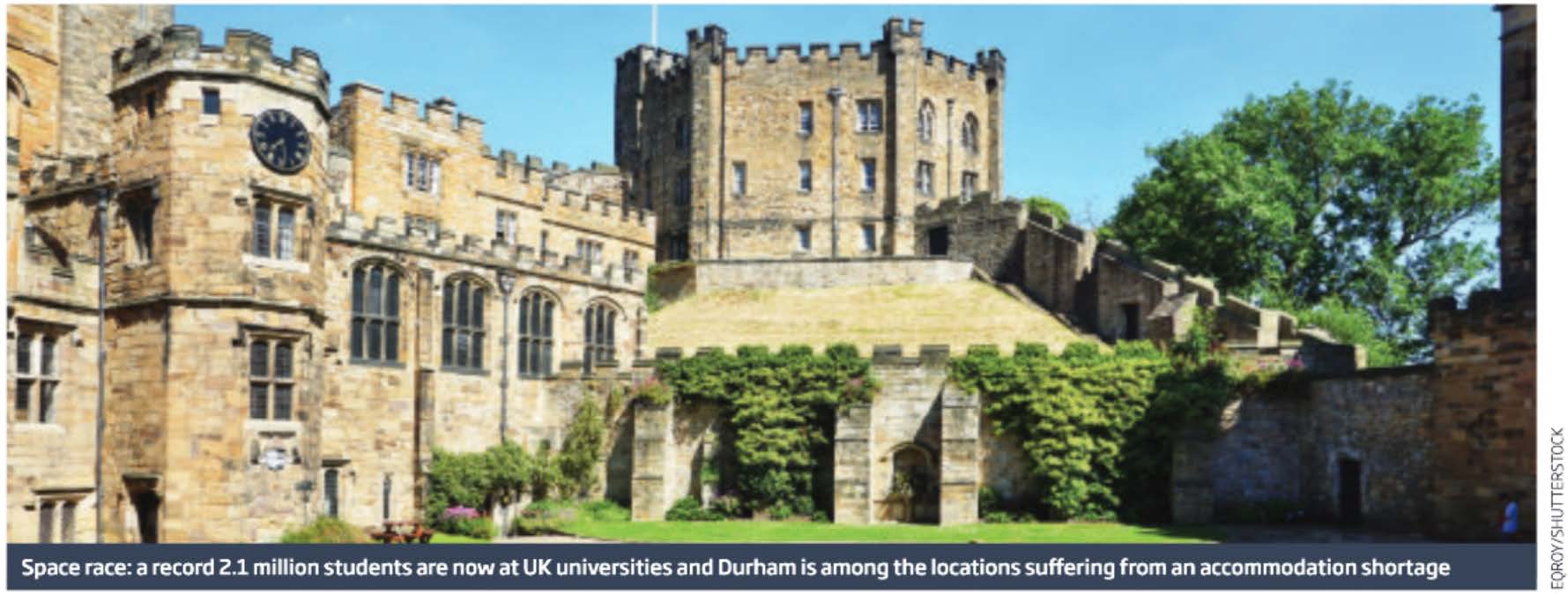Easing the University Squeeze

Sourced from Property Week
November 29, 2022
As 2.39 students compete for each available bed, how can the sector help? Andy Hillier reports
At the end of October, hundreds of Durham University students queued for hours in the streets hoping to secure accommodation for the 2023-24 academic year.
The shortage of housing in the city has become so acute that some even queued overnight to ensure they were first in line when local estate agents released their lists of student accommodation.
The situation in Durham might be extreme but across the country students are struggling to find suitable accommodation. Figures from Cushman & Wakefield show that there are a record 2.1 million students studying at UK universities and more than 1.6 million of these require accommodation during their course. However, just under 697,734 beds were available to students for the 2021-22 academic year.
So what has caused the situation and what needs to be done to alleviate the problem in the long term? David Feeney, lead for the student accommodation advisory team at Cushman & Wakefield, says years of under investment in student housing has led to a structural under supply of accommodation. “Now, there are 2.39 students that need a purpose-built bed for every bed available,” he says.
Geographic difference
Colin Meharg, director at property consultancy MGAC | RLF, says the need for new accommodation is particularly acute in certain parts of the country. “We are seeing a growing supply issue, especially in university towns [and cities] that are also popular tourist destinations. such as Edinburgh and Brighton.” he says. “The explosion of Airbnb means that many properties that were previously let to students have now become holiday lets and short-term rentals.”
So what are the solutions?
Feeney says there needs to be “greater collaboration” between universities and the private sector.
“Fundamentally, we’ve got to deliver a lot more student accommodation,” he says. “But that’s difficult in an environment of rising construction costs and the headwinds we’ve seen in the funding market over the past couple of months.”
Vita’s Rooke says the issue needs to be looked at in a “forensic manner” by a range of different stakeholders, including universities, councils and private providers. “Successful solutions aren’t just the responsibility of one of those parties: higher education institutions have a role to play, private providers have a key role to play, and that all needs to be underpinned by council and political support.”
Meharg believes that it is particularly incumbent on universities to increase their own supply of student accommodation to meet the demand, but acknowledges that could be a challenge.
“It’s a balancing act as student numbers have been decreasing at some institutions because of a post-Brexit drop in European applicants.” he says.
Attitudes towards student accommodation also need to change. Feeney says that some local authorities remain hostile towards student accommodation, fearing the impact an influx of students will have on the local area.
“There is still a perception that the student body will be noisy and you’ll have the bin problems associated with HM0s,” he says. “But you’ve got highly professional operators running purpose-built developments. The environment is very different to 15 to 20 years ago.”
Student accommodation is sometimes also viewed as less important than other residential classes by councils. “A lot of local authorities have housing targets and councillors might have been elected on a manifesto of delivering affordable housing;’ says Feeney.
Rooke says it is vital the sector starts to get the message out that students add to an area, rather than detract from it. Vita has calculated its larger developments contribute up to El2m to their local economy.
“Students are huge spenders in the local area,” he says.”We have to look at what higher education institutions bring to a city centre, and what PBSA can do in terms of meeting the housing need and supporting jobs and inward investment. We have to start to move the conversation on.”
Meharg agrees, saying that cities need to “embrace the enabling potential” of student accommodation in their city centre masterplans, and local authorities need to support higher education institutions by accommodating their growth objectives within local development plans.
As a property class, student accommodation has performed strongly in recent years. Cushman & Wakefield’s data shows investors spent £4.6bn on PBSA in 2021 and it expects that figure to increase to around £6bn in 2022. Investment yields have remained steady at between 3.5% and 7.0%, depending on the area.








